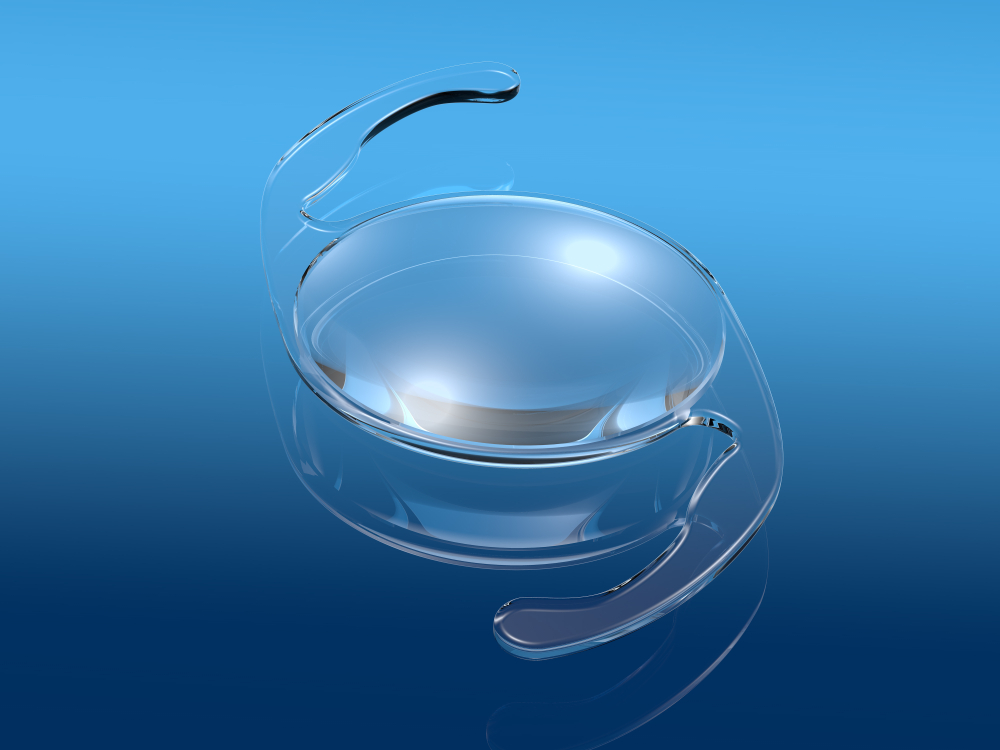Cataract

Cataract
Are you in the early stages of developing cataracts? Is your vision becoming blurry and cloudy? At Palmer Eye Center, we are proud to offer modern-day, no-stitch cataract surgery with state-of-the-art premium lens implants to help restore your vision.
What Are Cataracts?
Cataracts typically develop as a natural part of the aging process within the eyes. Although cataracts can develop earlier in life due to various factors like an eye injury, previous eye surgery, or certain health conditions, most people will begin to develop cataracts around age forty.
Cataracts occur as the proteins inside the eye’s natural lens break down and clump together. The lens inside your eye plays a significant role in allowing you to have clear vision. The light that enters your eye must travel through the lens before reaching the retina at the back of the eye. A healthy lens alters how the light travels, allowing it to land directly on your retina.
The retina takes the information from the light and sends it to the brain to form an image so you can see. If the light does not land directly on the retina, your vision will not be clear. Once cataracts develop, they block light from reaching the retina, causing a variety of vision issues. The only way to treat cataracts and restore vision is through cataract surgery.
Cataract surgery is a safe and effective procedure that produces excellent results.
What Are the Most Common Symptoms of Cataracts?
Depending on the type of cataracts you have, the symptoms you experience may vary. Some of the most common cataract symptoms are:
Since cataracts typically develop gradually, when you are first diagnosed, you may not notice much of a change in your vision. However, as your cataracts worsen, your vision will become more and more impaired.






Once a cataract makes it difficult for you to carry out your everyday activities, your eye doctor may suggest cataract surgery. Even if your regular vision is not affected, you might want cataract surgery to remove a cataract that’s causing problems.
Palmer Eye Center is pleased to serve the greater Tallahassee area, and we are an easy commute from the city center as well as the surrounding areas.
What Happens During Cataract Surgery?
First, your eye doctor will numb the surface of your eye, known as the cornea, with special eye drops. Although you will be awake, these eye drops will help you feel comfortable during the procedure.
Next, they will make a small incision in your cornea to access the area of your eye where the natural lens is. At Palmer Eye Center, our cataract surgeons use some of the most advanced technology available to make the procedure as precise as possible and produce optimal visual outcomes.
Our cataract surgeons utilize the ORA System with VerifEye technology during cataract surgery, which is a sophisticated tool that provides real-time measurements of your eye. Using this technology, your cataract surgeon can measure your eye at any time to ensure accuracy throughout the surgery, and the ORA System will evaluate it.

Your cataract surgeon will use a device to break apart your natural lens into tiny pieces and suction them out. Since you will need a lens to see, your eye doctor will replace your natural lens with an artificial intraocular lens, or IOL. Once the new lens is in place, the procedure will be complete. The tiny incision on the front of your eye will heal naturally during your recovery.
The entire procedure typically takes less than thirty minutes, and you will go home the same day!
Are You A Good Candidate for Cataract Surgery?
Take our Cataract Surgery Self-Test and find out!
What is an IOL?
Choosing an IOL to replace your natural lens during cataract surgery is a very important part of the cataract surgery process. An IOL, or intraocular lens, is an artificial lens that is used to replace your natural lens during cataract surgery.
Depending on the lens you choose, you may even be able to significantly reduce your dependency on contact lenses and glasses after cataract surgery. Your eye doctor at Palmer Eye Center will help you choose an IOL that best accomplishes your vision goals.
What IOLs are Available at Palmer Eye Center?
At Palmer Eye Center, our cataract surgeons offer various IOLs to match diverse needs. During your cataract evaluation, your eye doctor will help you choose which option may be best for you.
Monofocal
A monofocal IOL is a standard IOL that allows you to see clearly at a single distance. Many people who choose a standard, monofocal IOL will decide to have the lens power correct their vision for clear distance vision.
In this case, your vision would be very clear at a distance without the need for glasses. However, you would still need to wear glasses for certain activities that require near or intermediate vision, like cooking, reading, or sewing.
Monofocal IOLs are typically the only types of lenses fully covered by insurance, so they are also often cheaper. If wearing glasses for certain activities does not bother you and you would prefer not to spend extra on a premium lens, a monofocal lens may be a good choice for you.
Multifocal
A multifocal IOL is a premium IOL that can allow you to see clearly at multiple distances. This type of lens can allow you to reduce your dependency on visual aids like glasses and contact lenses.
Multifocal IOLs are typically considered premium lenses, so insurance will likely not cover them. If visual freedom is important to you, a multifocal IOL may be the best choice.
Toric
A toric IOL is another type of premium lens that can correct astigmatism. Those with astigmatism have a cornea or lens that may not be entirely round, which causes blurry vision.
Toric IOLs may correct the precise degree of astigmatism present in each individual eye using varying powers on various meridians. This may lessen the need for glasses or contact lenses by helping to enhance visual acuity after cataract surgery.
Depending on the amount of astigmatism you have, your eye doctor may recommend a toric lens.
PanOptix
The Alcon PanOptix is another type of premium IOL. The PanOptix lens is a trifocal lens that can provide you with a wider range of vision, including close, intermediate, and distant vision.
As a trifocal lens, it can drastically reduce your need for glasses or contact lenses following cataract surgery. It is also made with a special blue light filter and protects your eyes from harmful UV light.
Vivity
The Vivity IOL is an extended depth of focus (EDOF) IOL. It is a premium IOL that offers a range of vision from near to distance and reduces dependence on glasses and contact lenses.
This lens creates several focal points inside the eye, enhancing vision at various distances. Vivity utilizes non-diffractive X-WAVE technology, which allows you to experience excellent distance vision, with improved intermediate vision and functional near vision, with reduced glare and halos.

Are you experiencing symptoms of cataracts? Schedule a cataract evaluation at Palmer Eye Center in Tallahassee, FL, today!


